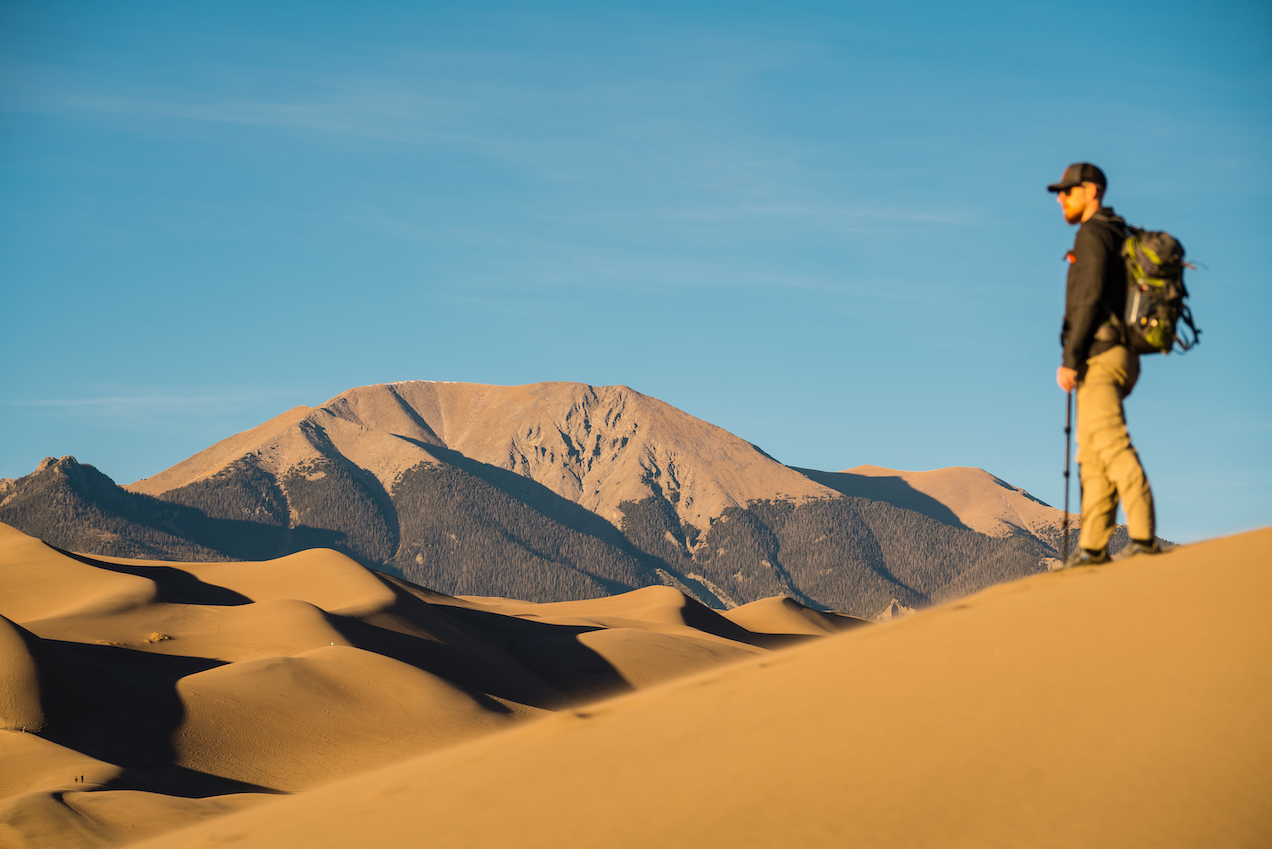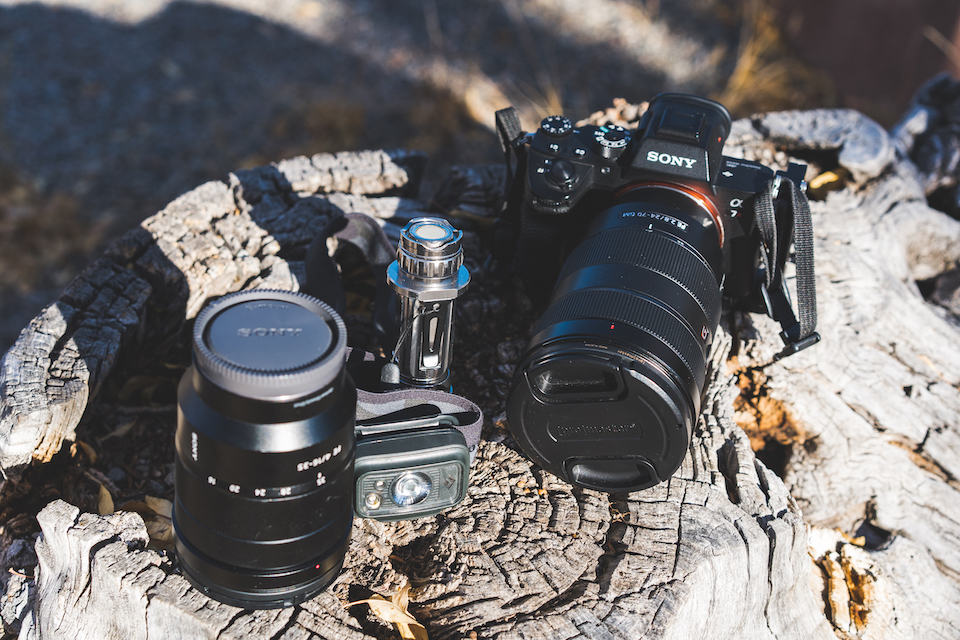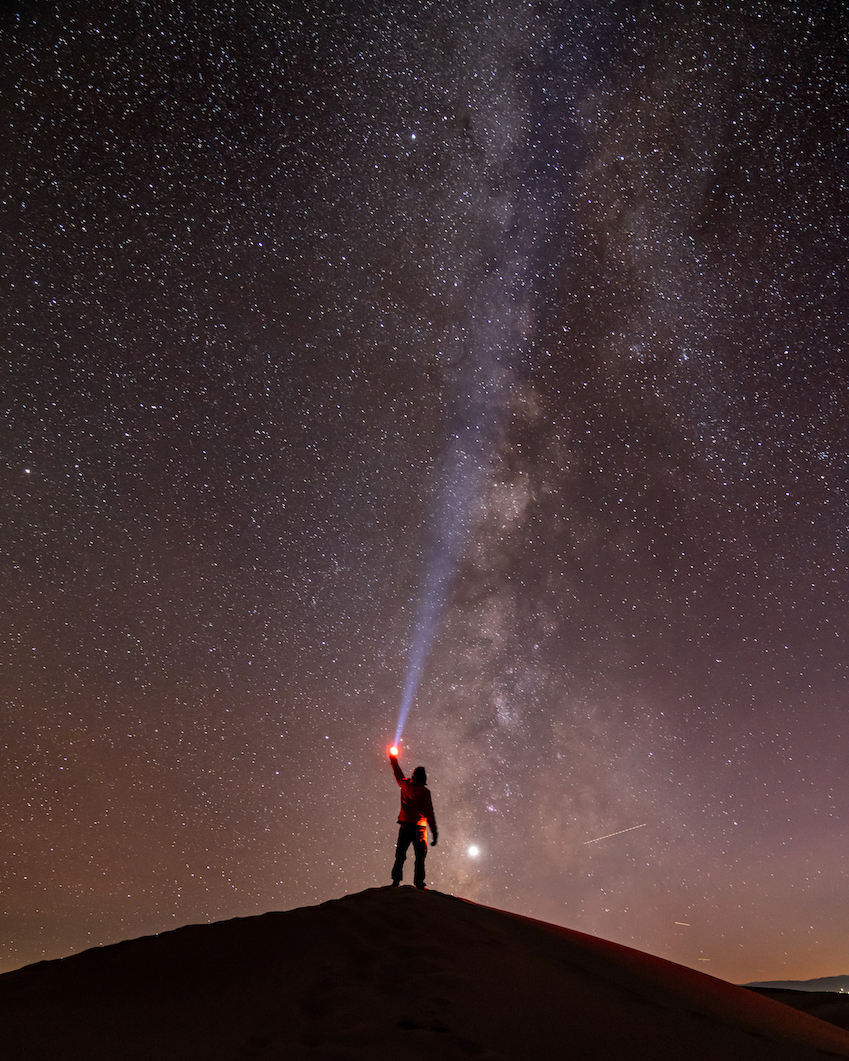Capturing Astrophotography in Colorado’s Great Sand Dunes National Park
As if capturing the intricate and vast solar system on camera isn't challenging enough, photographing the comsos from the Great Sand Dunes National Park presents additional challenges. The park is full of dynamically changing lighting, biologically diverse landscapes, and grandiose photo subjects. So then why is the national park recognized as top spot in Colorado for photographers? Because if done right... the results are extraordinary.
Written by Frankie Spontelli, a Denver-based adventure photographer. You can follow along to his travel, work, and photography here.
Prepare and Make a plan

It's important to head out to your location earlier in the day to make a plan for your astrophotography photoshoot. When walking around the dunes, look for interesting features or maybe a place for someone to stand so that you can capture their silhouette under the stars or the Milky Way. Scouting your location during daylight will significantly enhance the quality of your final images and give you a better idea of where you want to go and how you want to line up your compositions. It can be very challenging to try and create successful astrophotography at a location that you've never previously scouted. In Colorado, settings involving sand dunes are especially dark. For our excursion, we wandered into the sand dunes during sunset so that we could locate certain dunes and other features that we wanted to shoot during our astrophotography session. We made sure to bring plenty of warm layers so that we could stay in the dune field past sunset through the blue hour and watch the stars rise into the sky. Another tool that can be beneficial to bring with you or to pre-scout location is an app called ‘Photo Pills’ which will give you a rating for the Milkyway and also show you which horizon the Milkyway will rise. This app can also be used for shooting the moon, scouting sunsets or sunrises, and a handful of other uses. It’s a great app for photographers who like to get deep into the planning side of astrophotography, the more you plan the better the final result. After you plan out a few landscape or adventure compositions to execute under the night skies you can either wait for the stars to come out or return later in the evening to recreate your ideas under the Milkyway galaxy.
Camera Gear & Other Tools for a Successful Astrophotography Session

What to Bring:
- Camera: Any mirrorless or DSLR can capture stunning astrophotography
- Wide-angle lens with the ability to open up to F2.8
- Phone with stargazing app such as Photopills to assist in locating the Milkyway
- Ultra-bright flashlight or light up frisbee
- Sturdy tripod
- SD card
- Headlamp (with a red mode) & extra batteries
- Aputure MC4 LED Lights
- Extra camera batteries
- Blower and lens brush to clean off any blowing sand or dust
- Lens cleaning cloth
- Snacks & more snacks
- Warm layers, a blanket, and even a sleeping bag
- Camera settings
- Set camera to manual shooting mode
It's All in the Details
Focus Mode
Set focus mode to manual focus, snap focus on a bright star, or set the lens to your 'sweet spot'—where the majority of the stars in the sky are in view. This is close to the infinity point on most lenses Set white balance to custom, between 3000-4000 (tweak according to your camera body’s colors, can always be adjusted in post-production).
Timer
Always use a two, five, or ten-second timer so you don’t introduce any camera shake after pressing the shutter. When setting your tripod up in the sand, hang your camera backpack or some weight from the base of the tripod to make sure it is sturdy and won’t move during your long exposures.

Starter Camera Settings:*
- When shooting with a 14-16mm (wide-angle lens) 16mm 25-30” F2.8 or F4 at ISO3200
- 24mm 25” F2.8 at ISO3200
- When shooting with a 50 or 55mm (prime lens) 55mm 9”-13” F1.8 at ISO3200
*Make adjustments from here. If you zoom in on your test frames and the stars are trailing then shorten your shutter speed. If you zoom in on your test frames and see way too much noise, try lowering your ISO a bit, or if you want to see more stars raise your ISO to find the right balance. Zoom in on a few test shots to make sure your stars are tack sharp and adjust your focus. Anytime you move your camera, adjust your tripod, or change focal lengths you will need to double-check your focus to make sure you are focusing on the stars.
For further learning, here are a few great tutorials from YouTube covering the basics of Astrophotography:







